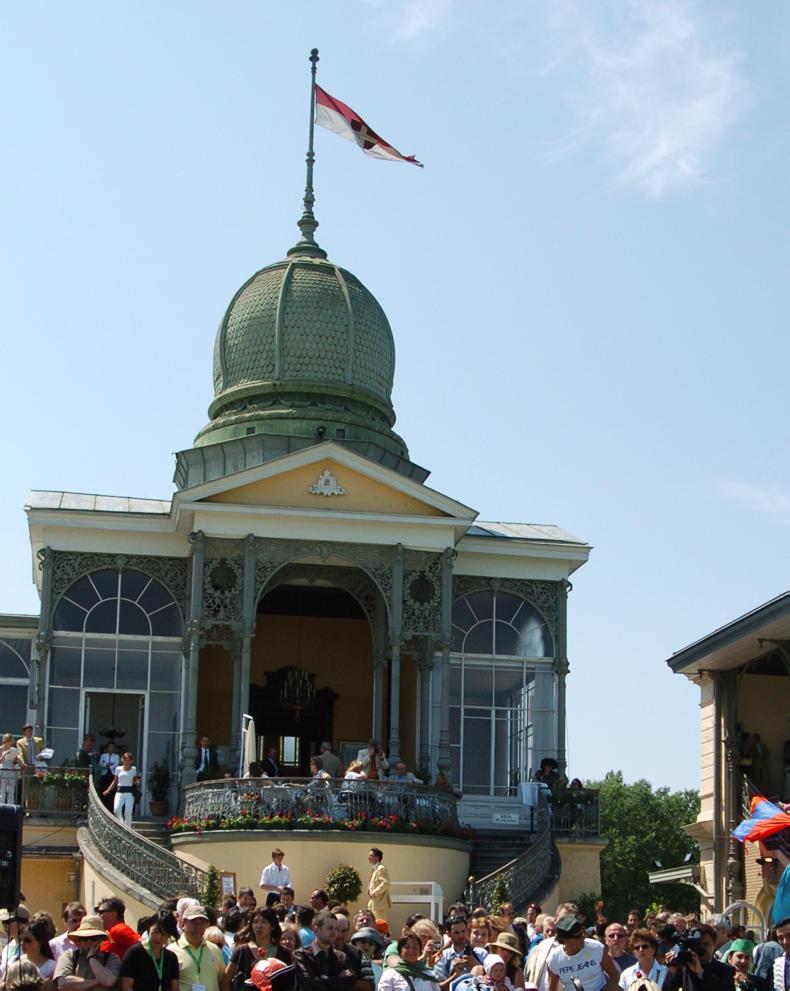SEPTEMBER is the month of the St Legers and Aidan O’Brien has already made his mark by winning the Curragh and Doncaster versions with Order Of St George and Capri, both sons of Galileo who could try to follow-up in the Prix de l’Arc de Triomphe. The French version, the PrIx Royal-Oak at Saint-Cloud in a month’s time, is still a Group 1 race but it has nowhere near the same prestige.
Last Sunday we had the German St Leger at Dortmund, won by 12/1 shot Oriental Eagle, who made all the running to score by a length and a quarter. He has been rewarded with a rating of 108 for this Group 3 success.
The previous day, the German-trained Iraklion had won the Austrian version by a nose in a desperate finish. He was the odds-on favourite and got up the line after looking beaten at the distance. He is officially rated 103.
This could not be called a great race; the seven runners included two from Germany, three from Slovakia, and one each from the Czech Republic and from the home country. The runner-up had previously been in action without much success in the French provinces. And yet this was a historic occasion – it was the first race meeting staged at the traditional Vienna racecourse Freudenau since 2008.
It is hard to imagine these days but Freudenau has a glorious history. The racecourse was officially opened on May 4th 1839 by Emperor Franz Josef I. The track, at the far end of the famous Prater Park, was one of the most fashionable in Europe. Crowds of 40,000 for races such as the Austrian Derby – usually contested by the best horses in Germany and Hungary, as well as the host country, were common. This was the time of the k und k (imperial and royal) dual monarchy of Austro-Hungary, one of the great powers in Europe.
Right: 
The imperial box at Freudenau in it's fashionable days
The Hungarian-bred Kisber was the best horse in Europe in 1876, winning both the Derby at Epsom and the Grand Prix de Paris; the great Hungarian mare Kincsem was active at the same period. She has serious claims to be regarded as one of the best thoroughbreds of all time, winning all her 54 races, including the Grosser Preis von Baden three times as well as the Goodwood Cup and Grand Prix de Deauville in the days when the only possible travel was by rail and it was difficult, tiring and slow.
COMMANCHE COURT
This is the track where Commanche Court won the Austrian Derby in 1996, when trained by Nicolas Clement, before going on to National Hunt success in the care of Ted Walsh, winning the Triumph Hurdle at Cheltenham in 1997, the Irish Grand National in 2000 and coming second to Best Mate in the 2002 Cheltenham Gold Cup.
The track itself is 2,800 metres round, with the start of the St Leger over that distance directly in front of the stands. The stands were built in 1885, but the track was badly damaged in World War II. It was rebuilt with the assistance of the British occupying troops during the period when Vienna was under the joint control of the four victorious allies.
However, a lengthy decay set in. A 100-year lease on the property was granted to the Habel family’s IRM in 1994 and the race club was dissolved the following year. When Frank Stronach built the Magna Racino racecourse at Ebreichsdorf, about 15 miles south of Vienna, it appeared that racing in the capital was finished.
Left: 
The imperial box at Freudenau
However, Ebreichsdorf has itself gone downhill and now stages mainly trotting races. Until last week, the last races to be run at the Freudenau were at a single race day in 2008. The IRM is to be congratulated on putting on last Saturday’s raceday with a newly-formed race club. Unfortunately their courage was not rewarded; the weather was far from ideal and only about 3,000 racegoers attended. I was one of them, my first visit in 30 years, and was delighted to see that some of the old flair was still present – the uniforms, the wonderful Imperial Box, the old fashioned stands, the track itself still in good condition.
IRAKLION
Iraklion’s victory, one of three on the day for German-trained runners, was the highlight of the afternoon. There was no early pace and he found himself in front right from the start; he led at a very sedate pace into the straight when he seemed to be swallowed up. The Czech-trained Icar took the lead at the distance and appeared to have the race in safe keeping, but Kazakhstan-born jockey Bauyrzhan Murzabayev conjured a great finish out of Iraklion, who got up in the final strides.
Iraklion is a five-year-old entire by Areion, almost certain to be Germany’s champion sire this year; he is an honest and tough performer, who was won four of his 26 starts, including two listed races and has been placed several times in good company. He is now a classic winner, and although Saturday’s race must be regarded as one of the world’s weakest classics, it had many other compensations – charm, tradition, a splendid racecourse with a long tradition.
IRM and its partners are now discussing whether to repeat this raceday in 2018; all lovers of racing history must be hoping that they do.